Honey Hole (noun): Named after a beehive for its honey, slang for a location that yields a valued commodity or resource, which, in this case, is bull elk.
Arthur J. Stephens
Honey Hole, a term often thrown around by public land hunters when referencing areas that hold game consistently from year to year. How long does it take and how many animals need to be harvested until a spot meets these criteria and this claim can be assuredly made? While the criteria likely vary from hunter to hunter, harvesting six 6-point bulls in six seasons, and three of them coming in one season seems like an eligible area for such a term. Another criteria worth considering, but sometimes overlooked, is maturity (or age) of the animals at the location. As manager of Matson’s Laboratory, I’ve seen firsthand the importance of age criteria in species management and conservation. Here the series of events are briefly described, and ages are compared among the six bulls, which were all harvested within a 2.5-mile radius up Nunya Creek in the Rocky Mountains of North America.
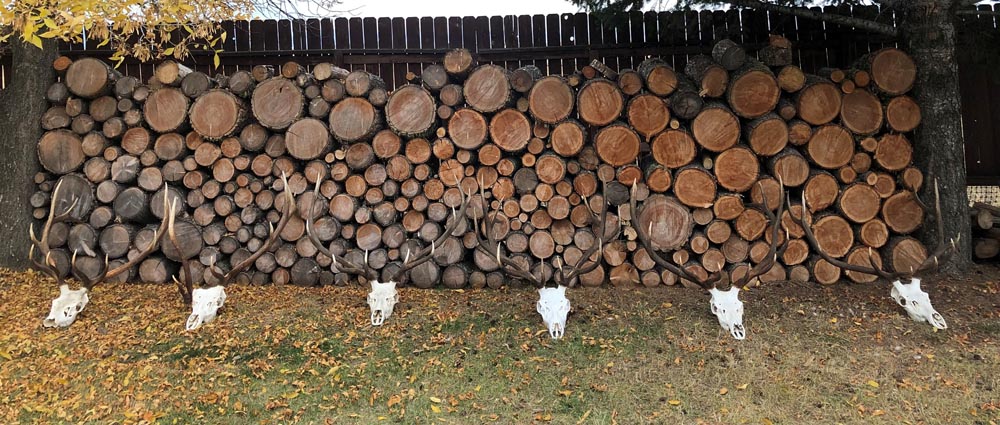
The discovery of the honey hole dates back to 2017, when my friend and hunting partner Mark was invited on a hunt with a friend targeting mule deer in the high country. On his hike in a bugle rang out, Mark bugled with his bugle tube made from a washing machine hose from the hardware store, the bull came in to 20 yards where it suffered a fatal blow from Mark’s arrow. Bull #1 down. Out of curiosity, Mark gave me a tooth to process at Matson’s Laboratory, where we assign age based on microscopic examination of annual growth layers in teeth. The bull came back as a five-year-old.
Not yet realizing how good of a hunting spot this was, it was not archery hunted in 2018 or 2019. Nearing the end of the 2019 season, Mark decided to take his wife Jessica back there on a late-season rifle hunt. While she practiced setting up on some deer on a grassy hillside 300 yards away, a group of bulls filled into the same opening with a unique 6 point in back with an old injury to the pedicle on its right side. Jessica’s practice setup paid off and the .270 WSM proved true. The bull collapsed and slid down the hill. Bull #2 down. Mark again gave me a tooth to process and the bull came back as a six-year-old.
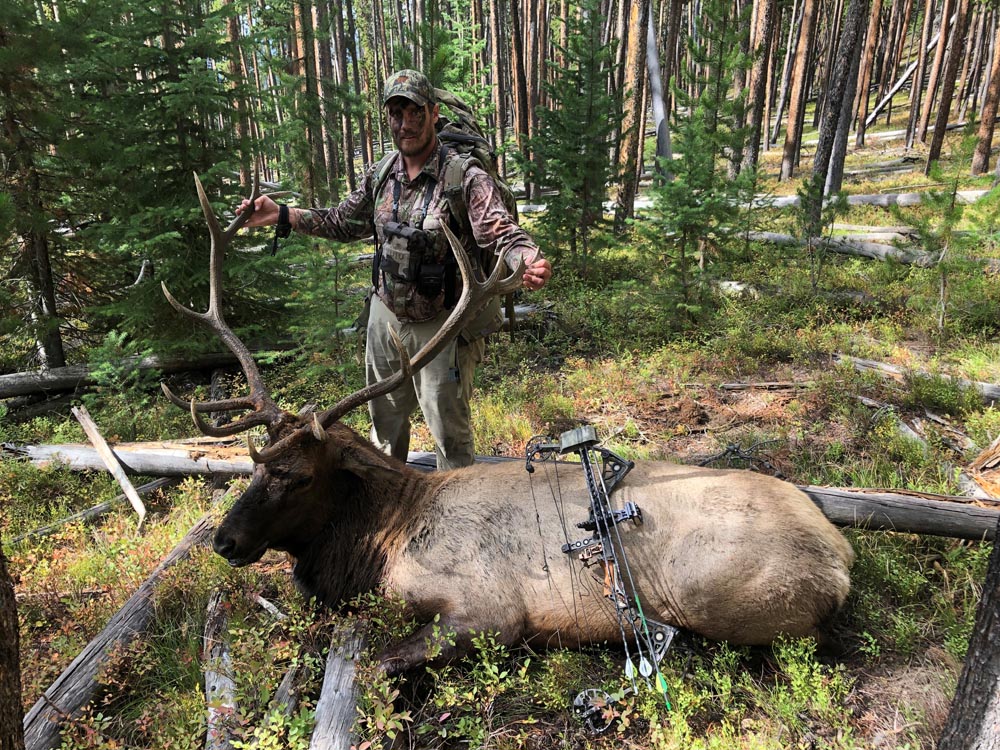
Still not realizing how good of a hunting spot this was, the spot was not hunted in 2020. In 2021, after nearing four seasons since last harvesting a bull and crossing a bunch of other unproductive spots off the list, Mark decided to hunt this drainage again and brought me along. On Day 2 of the hunt, after all bugling had stopped around lunch time and we had sort of figured it wasn’t going to work out, we decided to hike over to the cliff edges and make a plan from there. While hiking along a trail, Mark caught a glimpse of an antler and realized there was a bull not 100 yards off the trail. We worked our way into where the bull was hanging out with a small herd of cows and got set up in a small grove of new-growth fir trees. I bugled, but the bull didn’t want to commit. I decided to try tree thrashing to get the bull to come in. While I was turned away thrashing, I heard the sound of an arrow release. I looked up just in time to see the bull tipping over. Bull #3 down. Breaking down the bull I made sure to extract the central incisors to take to the lab for age analysis. We both thought this bull would be the oldest yet based on tooth wear, and that was confirmed when the age came back as an eight-year-old.
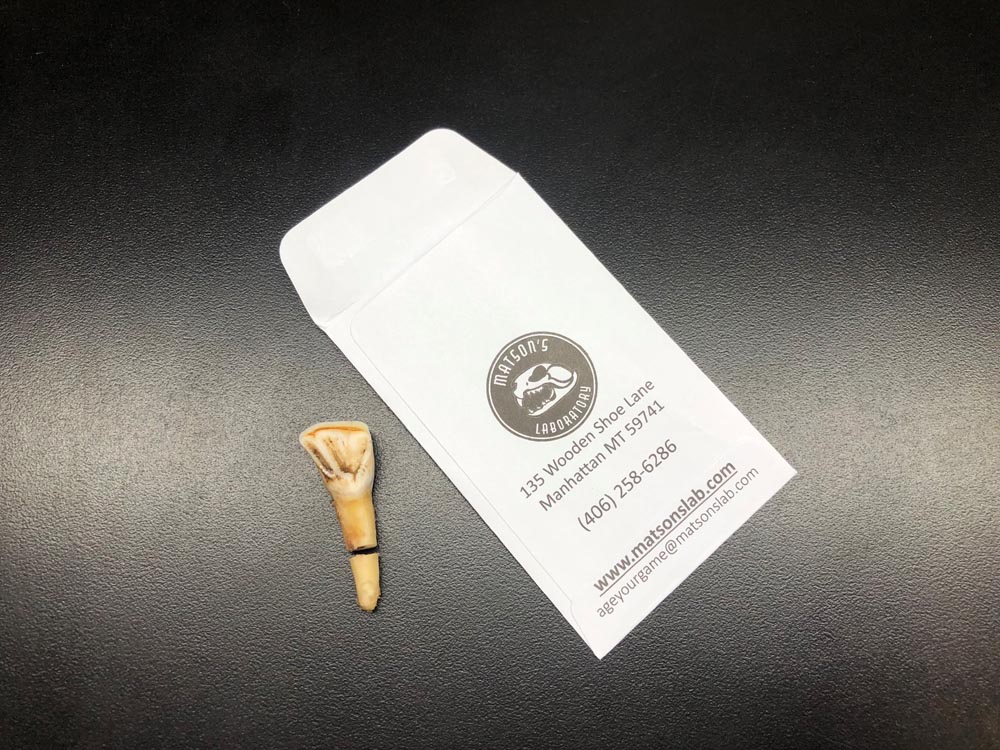
Jessica and another friend Jordan joined us for the pack out. During the course of that pack out we began tossing around the term honey hole, and I told Mark that I thought he had found a very good spot, perhaps the best spot we’d hunted when weighing in accessibility via USFS trails.
This fall, in 2022, on Day 2 of a 4-day hunt we heard a bugle just after sunrise. We decided it would be best to split up into two groups, and Mark suggested, “Why don’t you and Jordan run up there and get that bull while Jessica and I stay down here and listen in case he moves on.” Game on. Jordan and I set off, hiking quickly up the trail and bugling here and there to confirm we were heading in the right direction. We were able to find a fairly decent spot to set up, and carefully worked in between the bull and his small herd of cows. Jordan set up 10 yards behind me, and let out one of his textbook bugles. Immediately the bull responded and was close, just where we’d last heard him. After a few more bugles, the bull came into the 30-yard window and I arrowed the bull. Bull #4 down. Another beautiful dark-antlered timber bull aged at five-years-old.
Now we were convinced this was a Honey Hole.
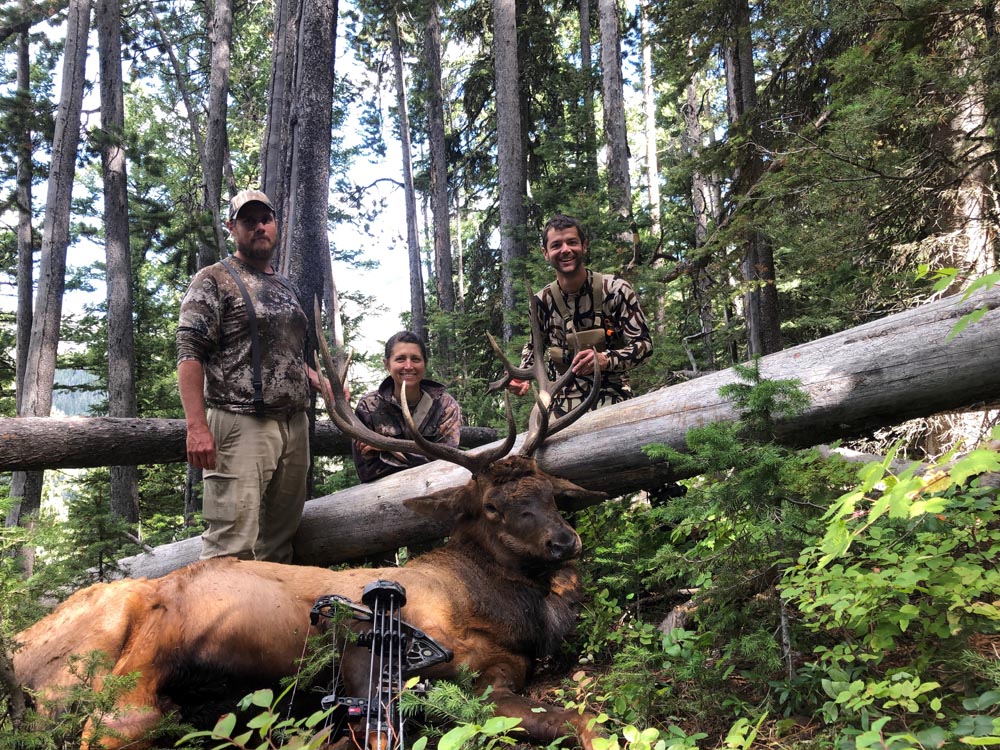
Three weeks later, Mark and Jessica took off into the drainage for a late start to a weekend hunt. Though well into October, they were still hopeful because the rut had started late in this spot so maybe it hadn’t ended yet. That evening they were into a herd with bugling bulls and decided to put them to bed and sneak out by full moonlight. Having camped just below them, miraculously the wind direction didn’t shift for 12 hours. This allowed their undetected approach on Day 2 resulting in the best 10-year anniversary gift this hunting couple could never imagine: a public land archery double on 6-point bulls. Mark called in the herd bull for Jessica and she arrowed her first archery bull at 25 yards. Jessica then insisted on calling in the other bull for Mark. He agreed, feeling pretty confident they could bone them out and find friends for the pack out. Mark got his bull down within 15 minutes and not 150 yards from Jessica’s dead bull. Jessica’s bull was aged at six-years-old and Mark’s bull at four-years-old.
Having all these bulls aged at Matson’s Lab has provided further insight into this locale of elk. Age, nutrition, and genetics are the largest contributors to antler size. While we all value the memorable type-2 fun pack outs more than the inches, we still appreciate large antlered bulls. None of these bulls score over 300”, and knowing the oldest bull, at 8, was also not the highest scoring is also neat to know. Learning the age of the animals we harvest is easy to overlook, but it provides hunters with a greater understanding of the animals they are hunting in a given area. This story demonstrates how knowledge of age is useful for everyone, not just those with a once-in-a-lifetime tag. Conservation-minded sportsmen and women hunting the same areas each season also find value in further refining their ability to age animals on the hoof. In the U.S., many states such as Utah, are setting age objectives for their big game populations. These age objectives are utilized in determining hunting permit allocations and allow the agencies to better manage our big-game populations.
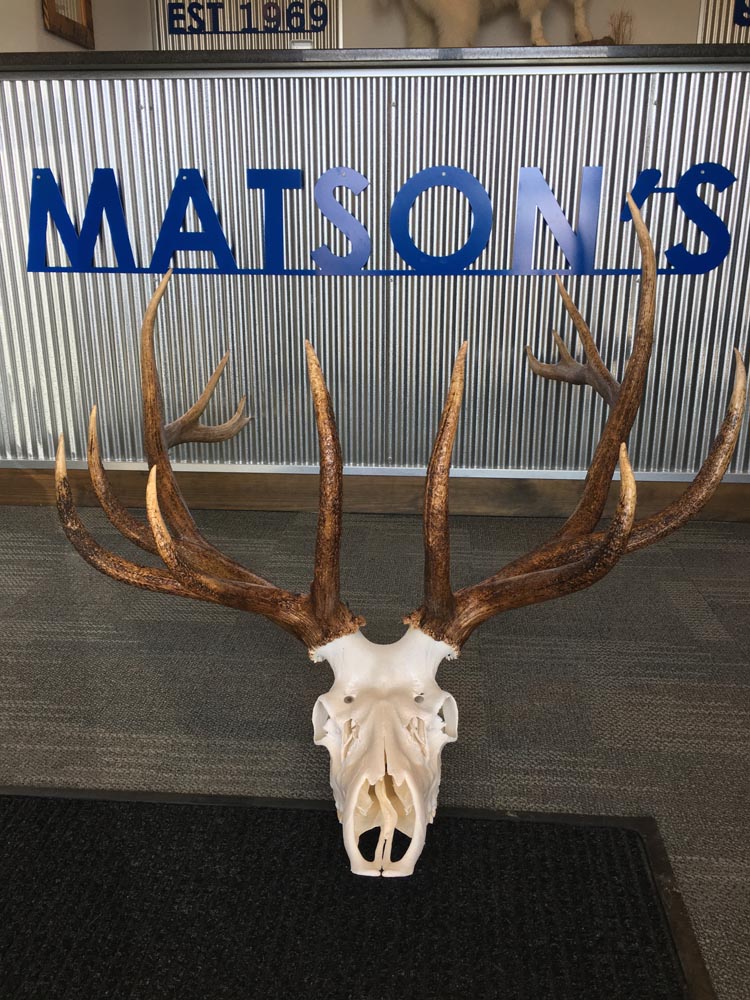
Working at the lab has provided many stories of age and antler size. We’ve had 4-year-old white-tails come through that were over 200” and the 430” Felix archery bull (Prime Tine, Bugle May/Jun 2018, page 64) was six. We’ve also had several 350”+ bulls and another bull over 400” aged at 12 years old. This seems to show evidence for a much longer “peak” in antler size somewhere around 6 or 7 through at least 12 years old. Since our honey-hole bulls were harvested near the younger range of some of the larger bulls, the habitat or genetics component of this locale is likely lesser than that of other areas. The four- and five-year-old bulls were likely also lacking in maturity. Regardless, it is important to know the age of the animals harvested, and will be fun to track as we continue to return to the (now official) Honey Hole.
Arthur lives in Montana with his wife Carla and has been at Matson’s for over 7 years and personally ages around 30,000 teeth each year. Matson’s Laboratory has aged nearly 3 million teeth from over 200 species across the world. No other lab in the world comes close to processing the volume and diversity of species, hands down. This experience and worldwide reputation with wildlife professionals and hunters alike means Matson’s Laboratory stands out among the few other labs that offer similar services. Hunter’s wishing to submit teeth may go to the website, www.matsonslab.com or call 406-258-6286 for more information.
